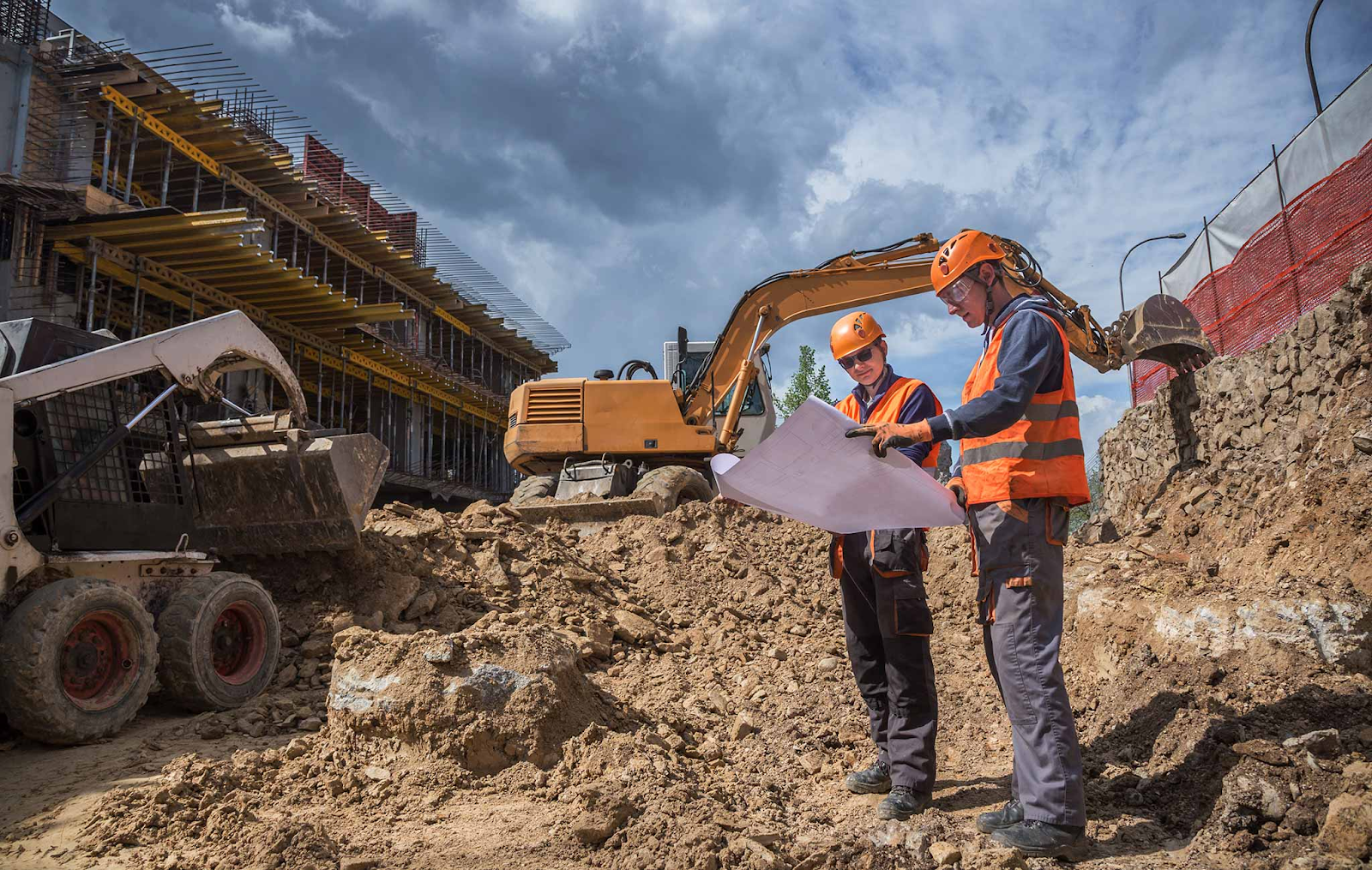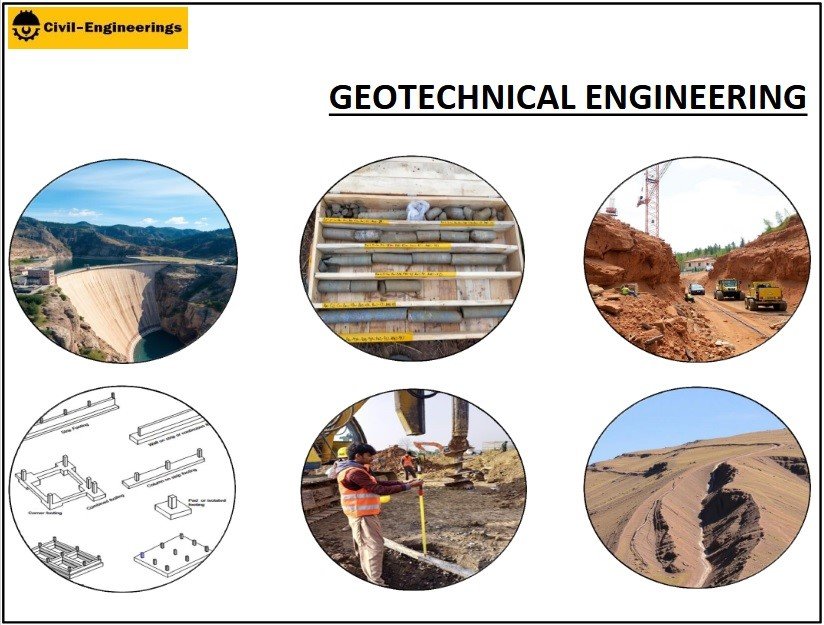8 Easy Facts About Geotechnical Engineering For Construction Projects Explained
The Only Guide to Geotechnical Engineering For Construction Projects
Table of Contents5 Simple Techniques For Geotechnical Engineering For Construction ProjectsThe 7-Second Trick For Geotechnical Engineering For Construction ProjectsGeotechnical Engineering For Construction Projects for BeginnersThe Best Strategy To Use For Geotechnical Engineering For Construction ProjectsThe Basic Principles Of Geotechnical Engineering For Construction Projects 8 Simple Techniques For Geotechnical Engineering For Construction ProjectsAll about Geotechnical Engineering For Construction Projects
and Kovacs, W. (1981 ), An Introduction to Geotechnical Design, Prentice-Hall, Inc. Deep Check Tech (2023 ): Deep Scan Technology discovers surprise structures at the site of Denmark's highest building. "Geofrost Coring". GEOFROST. Fetched 20 November 2020. Han, Jie (2015 ). Principles and Practice of Ground Enhancement. Wiley. ISBN 9781118421307. RAJU, V. R.Ground Improvement Technologies and Case Histories. Singapore: Research Study Publishing Solutions. p. 809. ISBN978-981-08-3124-0. Ground Improvement Concepts And Applications In Asia. Pariseau, William G. (2011 ). Design analysis in rock mechanics. CRC Press. Hegde, A.M. and Palsule P (Geotechnical Engineering for Construction Projects).S. (2020 ), Performance of Geosynthetics Reinforced Subgrade Subjected to Repetitive Car Loads: Experimental and Numerical Researches.
Cengage Knowing, Stamford, 666 p. Atkinson, J., 2007. The technicians of soils and structures. Taylor & Francis, N.Y., 442 p. Floating Offshore Wind Turbines: Actions in a Sea state Pareto Ideal Styles and Economic Assessment, P. Sclavounos et al., October 2007. Nicholson, D, Tse, C and Penny, C. (1999 ). The Observational Approach in ground engineering principles and applications.
Some Known Questions About Geotechnical Engineering For Construction Projects.
Research laboratory and area testing plays a vital role in this procedure. By extracting examples from the earth's subsurface and using a suite of examinations, geotechnical engineers can predict the behavior of dirt layers and evaluate their suitability for numerous building efforts. The significance of geotechnical engineering in civil design can not be overemphasized, attributable to numerous factors: The initial step in any type of geotechnical research involves identifying the dirt type at the building and construction site.
Recognizing these attributes guarantees that just suitable soil types are selected for the development, therefore averting potential structural failures. The structure works as the bedrock of any kind of building and construction job. Picking the suitable foundation type is a decision that rests on the thorough evaluation given by geotechnical design. This makes certain the long life and stability of structures by accommodating the loads they will birth.

Geotechnical site investigation is a vital action in the preparation and execution of any type of building and construction job. It includes the collection and analysis of information connected to the physical residential or commercial properties of soil and rock beneath a recommended building and construction site. This information is essential for the style and construction of safe, secure, and lasting frameworks.
The Ultimate Guide To Geotechnical Engineering For Construction Projects
, additionally understood as subsurface exploration, entails a series of activities intended at figuring out the soil, rock, and groundwater problems at a building and construction website. The main objectives are to recognize possible geotechnical hazards, analyze the design residential or commercial properties of subsurface products, and provide suggestions for the layout and construction of foundations, maintaining walls, and other structures.
The workdesk research assists in determining potential geotechnical concerns and intending the subsequent fieldwork. This includes observing the topography, drain patterns, existing structures, plant life, and any type of indicators of instability or disintegration.
Some Of Geotechnical Engineering For Construction Projects
Superficial test pits are excavated to straight observe and sample the soil and rock. This technique serves for researching the upper layers of the subsurface and identifying near-surface risks. Non-invasive geophysical approaches, such as seismic refraction, ground-penetrating radar (GPR), and electric resistivity tomography (ERT), are made use of to map subsurface conditions and identify abnormalities.
Soil and rock samples accumulated during the area examination are subjected to lab screening to establish their physical and mechanical residential or commercial properties. These examinations offer vital data for geotechnical analysis and style.
The main advantage of geotechnical site examination is making sure the safety and security and security of frameworks. By recognizing the subsurface problems, designers can make foundations and other architectural aspects that can hold up against the loads and ecological pressures they will undergo. This reduces the danger of settlement, subsidence, and architectural failing.
The Buzz on Geotechnical Engineering For Construction Projects
For instance, comprehending soil attributes can lead the choice of excavation strategies, dewatering approaches, and ground enhancement measures. This ensures effective and risk-free building and construction techniques. Geotechnical site investigations are usually called for by building have a peek here codes and guidelines. Adhering to these needs makes certain compliance with lawful and safety and security requirements, staying clear of potential lawful obligations and project delays.
This info is very useful for task managers, designers, and service providers in developing sensible timetables, budget plans, and backup plans. Geotechnical Engineering for Construction Projects. Skyscraper in a Coastal AreaIn a coastal city, a skyscraper property building was prepared on a website with suspected loosened sand down payments and a high water table. An in-depth geotechnical investigation, including borehole exploration, CPT, and geophysical studies, was conducted
6 Simple Techniques For Geotechnical Engineering For Construction Projects
Based on these searchings for, the structure design was modified to consist of deep stack foundations prolonging into secure strata, and ground renovation methods, such as vibro-compaction, were carried out to reduce liquefaction risks. This aggressive strategy ensured the security and stability of the building while staying clear of expensive post-construction remediation. Infrastructure Growth on a Sloping TerrainA significant infrastructure job, including the building and construction of a freeway and bridges, was intended on an uneven terrain with steep slopes.

The Leaning Tower of Pisa (Italy), a famous building wonder, is well known for its unintentional tilt from significant geotechnical issues. The tower's structure was inadequately made to take care of the soft, unstable dirt beneath it, bring about uneven negotiation and its distinctive lean. Our globe is dotted with remarkable facilities projectsfrom towering high-rises to sprawling bridgesall standing statement to the evolution of the numerous building tools and techniques readily available.
Geotechnical design is a specialized area within civil engineering that concentrates on researching the habits of earth materials. This branch digs deep right into the groundinvestigating exactly site web how the dirt, rock, and groundwater at a construction site can influenceand be affected bythe framework that we set up on and right into them. Prior to a solitary block is laid or a concrete foundation poured, geotechnical designers probe right into the earthgathering essential information regarding the website's dirt composition, rock structure, and groundwater degrees.
A Biased View of Geotechnical Engineering For Construction Projects

is a tool utilized to analyze the integrity and load-bearing capability of piles during installment, leveraging the principle of wave proliferation. It maximizes building and construction effectiveness by supplying real-time evaluations, thus guaranteeing secure and reliable heap foundations. One of the useful applications of geotechnical design entails choosing and carrying out the appropriate approaches for structure construction.
Stack driving represents more than the plain act of putting architectural aspects into the ground. However, it is a thoroughly orchestrated procedure of moving a framework's lots past the less steady dirt layers more detailed to the surfacedown to the much more substantial strata that lie below. When it comes to stack driving, think about how geotechnical designers adeptly utilize this technique to uniformly disperse the structure's weight.